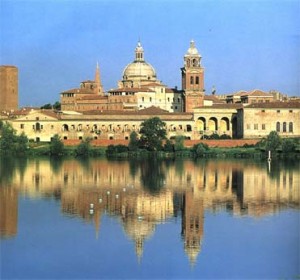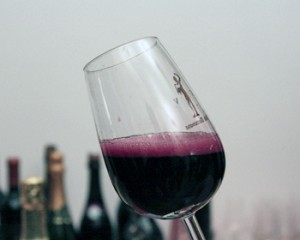Mantua Lambrusco
We already talked about the Lambrusco Modenese, in its three types, the first to obtain, in 1970, the DOC.
But there are other DOC of Lambrusco, in Reggio Emilia, Parma and Mantua.
Today we will talk about the Mantua DOC.
Situated between the Garda Lake, the Mincio and the PO, Mantua is the homeland of the Gonzaga dynasty and the area of production of fine wines.

Lambrusco Mantovano DOC is a sparkling table wine, ruby red in color, with a minimum alcohol content of 10 °.
The scent is quite intense, little persistent, winey and fruity.
The palate is soft, almost bodied, rather fresh, slightly tannic and fruity, and well balanced.
Lambrusco Mantovano DOC is produced in two distinct areas: the Viadanese, ie the territory between the Oglio and Po rivers including the towns of Viadana, Sabbioneta, Dosolo and Pomponesco and Oltrepò Mantovano; in the province of Mantua the towns of Suzzara, Gonzaga, Pegognaga, Moglia, Quistello, San Benedetto Po, Revere, Poggio Rusco, Sermide.
The winemaking tradition in the lower Mantua dates back to the time of the Benedictines which required the tenants of their land the tax wine which he has testimony. Although the development of grape growing start in 1100, the modern viticulture was born in the mid-1900s following the invasion of phylloxera. Numerous grape plants that covered the surface of the Mantuan plain and the seven wine cooperatives that gathered grapes for processing, pushed farmers to form, between 1902 and 1958, many cooperatives.
Between 1950 and 1960 begins the conversion of agricultural land to the right of the Oglio and the Po, while areas to the left of the Po and Oltrepò Mantovano stood vine cultivation.
These areas represent today the areas of production of Lambrusco Mantovano considered the flag wine around the Low Mantovano.
To indicate the quality and reputation overseas of this wine, Lambrusco Mantovano gets DOC recognition in 1987.
Lambrusco Mantovano DOC is obtained from grapes of Lambrusco Viadanese, Grappello Ruberti, Lambrusco Maestri, Lambrusco Marani and Lambrusco Salamino minimum 85%, with the possible addition of Ancellota and Fortana and for a maximum of 15%. After crushing, the grapes are put to ferment and macerate with the marc in containers called fermentation, using the technique of red winemaking. It is during this phase that peels and marc release the pigments that give red wine.
With the subsequent racking, the marc is separated from the must decanting the wine in storage tanks.
In these tanks due to low temperature it freezes alcoholic fermentation and malolactic fermentation begins. In this phase the wine undergoes a reduction of acidity and acquires stability, clarity and some of typical organoleptic characteristics.
After aging the wine is stabilized and bottled.
Being a sparkling wine, Lambrusco Mantovano Doc undergoes refermentation, by which you get the development of the spume. Sweetening must be made with grape must or concentrated must, all from grapes suitable for the production of this wine Doc.
In accordance with the law is allowed the use of rectified concentrated must.
In the early 1900s Italian immigrants forced to move to South America, did not give up to bring their own Lambrusco Mantovano considered the wine of the Italian tradition.
Lambrusco in the same period appears on the tables of the Waldorf Astoria in New York.
To properly store the Lambrusco Mantovano DOC is sufficient to keep the bottles at a humidity of 70-75% to prevent the corks from drying.
It is also advisable to maintain a constant temperature between 10 and 15 ° C and use wooden shelves, on which place the bottles in a horizontal position in order to cushion the blows.
Lambrusco Mantovano DOC at the olfactory analysis looks pretty intense, little persistent, winey, fruity.
It tastes sweet, soft, almost to the body, sufficiently fresh, slightly tannic and full-bodied and balanced on average.
To fully appreciate the taste, is advisable to combine Lambrusco Mantovano DOC with little or quite structured preparations, as broths of meat, boiled meats, cotechini. We recommend the tasting in wineglasses for rosè wines, at a temperature between 14 and 16 ° C. The best time to drink it is within one or two years after harvest.





Leave a comment